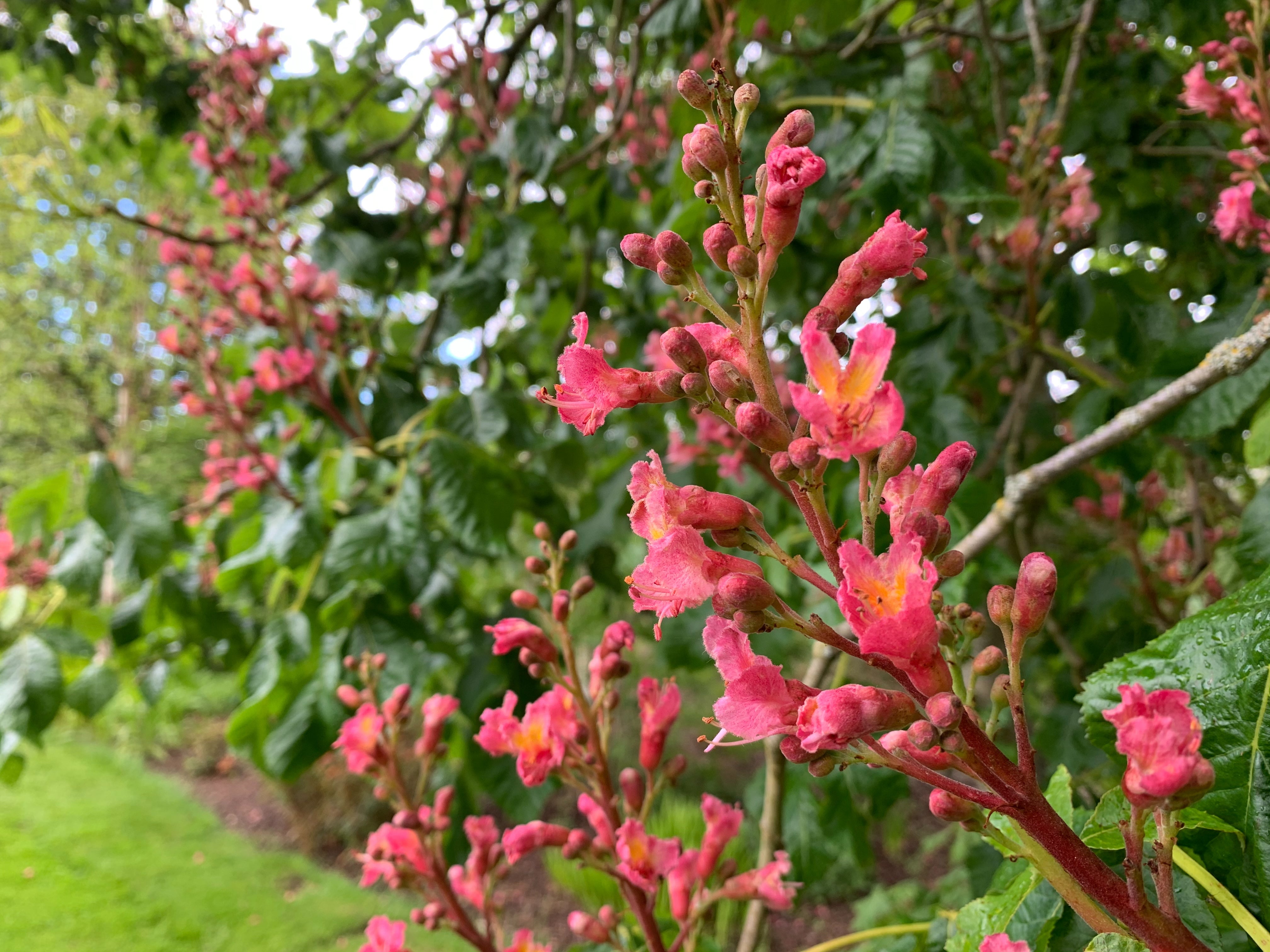Candles in the wind

In the Genus garden Malus, cherry, Sorbus, and Amelanchier are trees with exceptional blossom but a favourite on a totally different scale are the Aesculus trees - the horse chestnuts. We have two, one probably about 50 years old and the other about 20. A classic parkland tree and famous for their conkers they were introduced into the UK in the 16th century. We particularly love them for the pyramid shaped spikes of flowers or ‘candles’ as they are commonly called due to their white colour and upright appearance.
The younger of our two trees is actually a red horse chestnut, Aesculus x carnea, and boasts beautiful red ‘candles’. It’s a hybrid of Aesculus hippocastanum and Aesculus pavia - the red buckeye. It doesn’t attain the same majestic proportions of the larger Aesculus hippocastanum and, because of this, can often be seen in car parks and more urban environments; we’re lucky to have space for both.
The larger of the two suffers from the leaf mining moth Cameraria ohridella which dissfigues the leaves in late summer and whilst both can drop their conkers in early autumn, the smaller tree is virtually sterile and just litters the ground with empty husks. Now is the best time to be enjoying the flowers and we’re glad that last week's gales sweeping across the country didn't remove them all prematurely.







